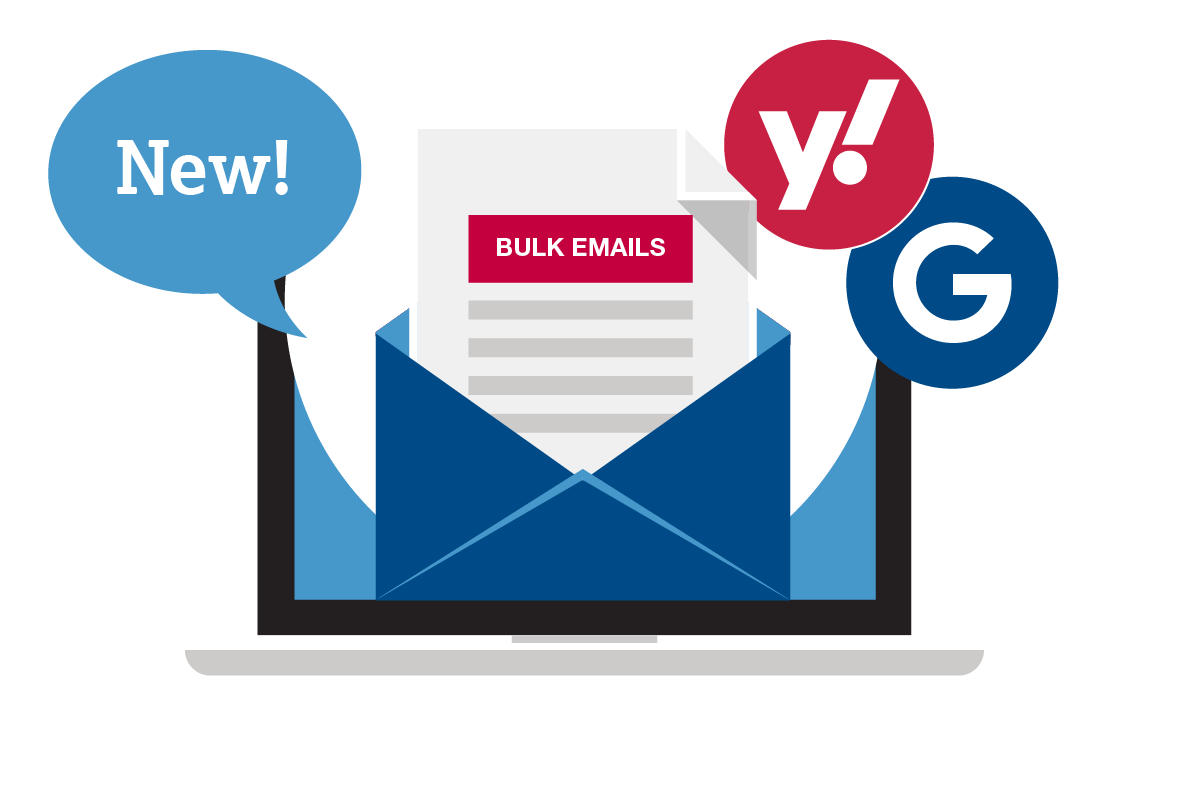New Google & Yahoo Bulk Email Standards: What You Need to Do
posted on

Google and Yahoo have established new requirements for bulk email senders to protect people from receiving unwanted emails. If you send more than 5,000 emails per day, you will be affected by these changes as of February 2024. Here’s what you need to know.
These standards improve email security by verifying sending servers and detecting fraudulent domains. It’s important to note that authenticating your email is not a new idea—it has always been a best practice. The difference is, now those practices will be enforced.
While they will add a few more steps to your email practices, the new requirements will actually improve deliverability and enable you to build credibility as an authenticated email sender. They will also prevent bad actors from impersonating your domain and sending emails that look like they come from your organization. If you don’t comply with the new requirements, you may start to have problems with email delivery.
To comply with the new requirements, bulk email senders must:
1. Use all three email authentication methods.
There are three email authentication methods that can help prevent spammers, phishers, and other unauthorized parties from sending emails from a domain they do not own.
- Sender Policy Framework (SPF) checks whether the server sending the email is an authorized sender.
- DomainKeys Identified Mail (DKIM) lets email senders verify the authenticity of emails from their domain using a digital signature.
- Domain-based Message Authentication Reporting and Conformance (DMARC) tells mail servers what to do if SPF and DKIM fail—mark the email as spam, deliver it anyway, or quarantine it. (If you do not want DMARC to provide this guidance, you can set its enforcement policy to “none.”)
Each of the above methods must be set up and configured individually. You will need to get the necessary information from your email service provider and then contact your DNS provider to request the updates.
2. Allow one-click unsubscribes.
Some emails bury unsubscribe links in difficult-to-find places and seem to take forever to honor unsubscribe requests, if they do at all. That’s not a good marketing practice. While unsubscribes may seem undesirable, giving people a way to opt out of emails from your company actually improves open and clickthrough rates and improves sending efficiency. Unsubscribes can even help you improve your marketing. Under the new regulations, you must give email recipients the ability to unsubscribe with one click, include a visible unsubscribe link in the body of the email, and honor unsubscribe requests within two days. Most of the popular email service provider's such as Mailchimp do this automatically.
3. Monitor spam rate.
Are your emails being marked as spam? If so, it could hurt your sender reputation. Under the new regulations, you must keep your spam rate under 0.3%. If your spam rate is higher, you may need to reconsider your email marketing strategies. Gmail users can monitor their spam rates by verifying their domain with Postmaster Tools.